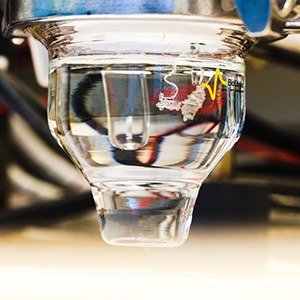
Cases with microanalysis and imaging
We help a wide variety of clients with different challenges and tasks within microanalysis, imaging, nanocoating, and we also carry out case studies within these business areas.
Below you can find a selction of our cases that shows the range of our work and competences.
 Case: Topsil GlobalWafers A/S
Case: Topsil GlobalWafers A/S
Danish Technological Institute helps Topsil GlobalWafers A/S prove their silicon quality with topography. Topsil is a world-leading supplier of ultrapure silicon, which is used to make energy-efficient power components used in wind turbines, high-speed trains, and motors.
Read more
 Case: NIL Technology
Case: NIL Technology
Specialist knowledge of nanocoating resulted in greater customer satisfaction for NIL Technology who had a challenge with the coating of their stamps. A collaboration with the Danish Technological Institute - a leader in nanocoating in Denmark - now provides top-class coating.
Read more
Case study: Porosity in pharmaceutical products
The porosity of two over the counter (OTC) medicine tablets were investigated with micro-CT scanning, high-pressure mercury intrusion and gas adsorption techniques. The two OTC medicines, named OTC1 and OTC2, have the same purpose but OTC1 claims to have a faster effect.
Read more
Case study:Pellets & phase contrast
In this case study, pellets were visualized by both laboratory micro-CT and phase contrast tomography (HiP-CT, synchrotron source). With the addition of phase contrast, it's possible to distinguish between different types of organic material.
Read more
Case study: Soft tissue in small fish
In this case study, we used phase contrast tomography at the ESRF to image fish with unprecedented detail in the internal organs. The purpose of the investigation was to study the digestion of various experimental diets. With the three-dimensional tomography data, it's possible to study the digestion of experimental feed as it passes through the fish.
Read more
 Case study: Nickel's role in advanced catalysis
Case study: Nickel's role in advanced catalysis
Our research focuses on making clean energy production more sustainable and cost-effective. We're exploring ways to reduce the use of iridium, a rare and expensive metal, in hydrogen production systems. By adding nickel to existing catalysts, can we enhance catalyst performance while using less scarce resources? This breakthrough could make green hydrogen technology more accessible and widespread, supporting the global transition to cleaner energy sources.
Read more


